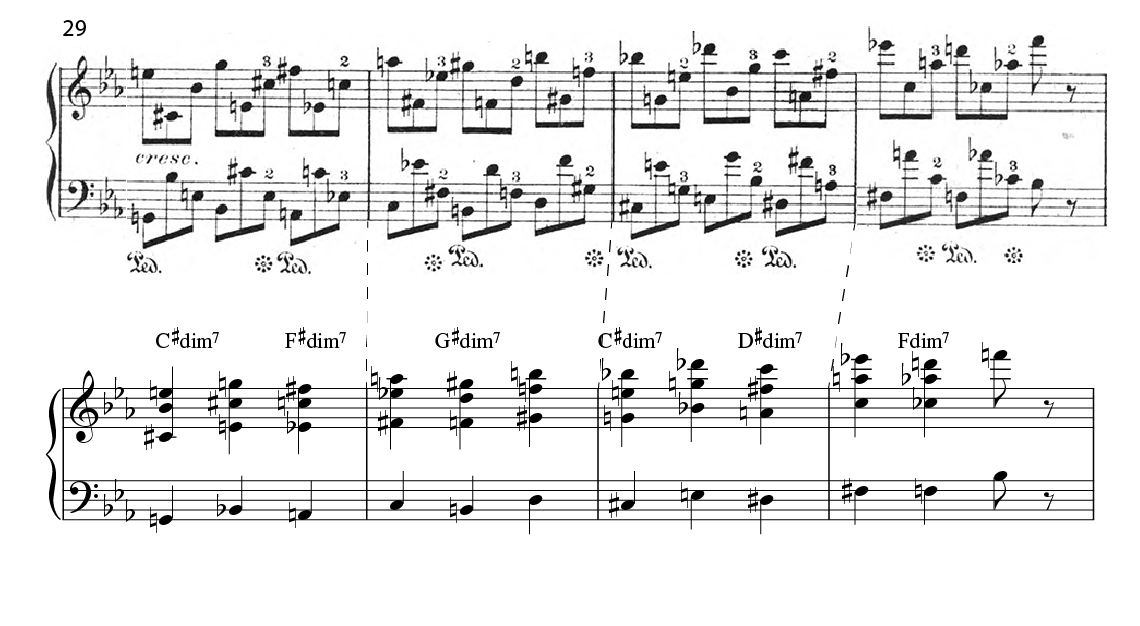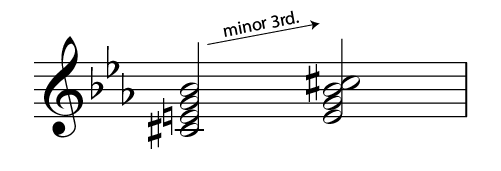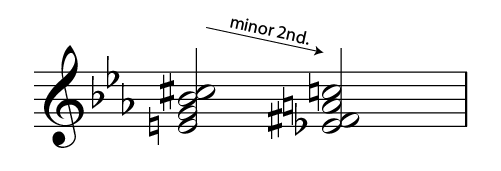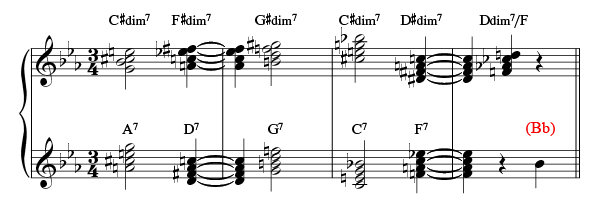Prelude No. 19 in Eb Major by Frédéric Chopin
José Rodríguez Alvira
 : Second Phrase
: Second Phrase
The second phrase starts as a repetition of the previous phrase. But, in measure 29, a diminished seventh chords progression starts:

The progression begins with an ascending minor third (note that both chords have the same notes):

Followed by a descending minor second:

By removing the minor third chords (since they are the same chord as the previous one), we can simplify the progression:

After our simplification, we find a progression of diminished seventh chords ascending by major seconds. All chord notes move using a whole tone scale. The scale is seen in the lower voice: G-A-B-C#-D#-F
We can also find a dodecaphonic series in the first three chords. The series is repeated in chord 4 to 6:

But of course, a traditional analysis is possible. If we substitute each diminished seventh chord by an equivalent dominant seventh chord, we find a cycle of fifths that leads us back to B flat:

The C# diminished seventh chord is the VII degree of D. A dominant seventh chord is the dominant of D. Similarly:
| Diminished Seventh | Dominant Seventh |
|---|---|
| F# diminished, G's VII degree | D dominant, G's V degree |
| G# diminished (enharmonically B dimished), C's VII degree | G dominant, C's V degree |
| C# diminished (enharmonically E dimished), F's VII degree | C dominant, F's V degree |
| D# diminished (enharmonically A dimished), Bb's VII degree | F dominant, Bb's V degree |
© 2019 José Rodríguez Alvira. Published by teoria.com